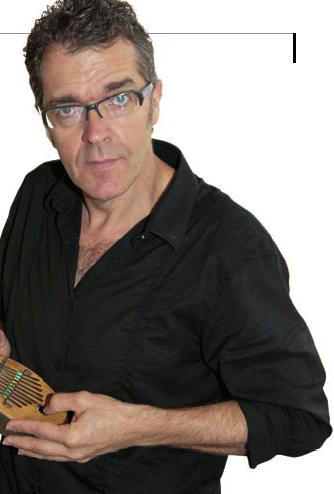MusicNOW offers three works of attractive virtues at the Harris

One of many possible ways to describe a program of contemporary music is to imagine an index that measures user-friendliness. Does its complexity challenge the ear to dig deep for artistic merit, or are its virtues plain to hear on first exposure?
MusicNOW’s concert of three works Monday at the Harris Theater fell unambiguously in the latter category. Minimalism wasn’t the dominant force in any of the works, but its presence in various guises was felt in each.
CSO Composers-in-Residence Mason Bates and Anna Clyne were on hand to introduce the three offerings, starting with Bates’ Red River for four live players and prerecorded sounds. The 18-minute work is a road movie of sorts, tracing the path of the Colorado River from its sources high in the Rockies through man-made barriers and finally to the Sonoran desert in California. In his notes the composer references “trip-hop” and drum ‘n bass, but older terms (swing, jazz, funk, lounge) are just as apt.
The edge these styles might have provided was sanded smooth by his restrained use of the acoustic instruments, while the spirit of Copland and Adams emerged often. It’s an attractive and evocative piece, one that might be more effective as a soundtrack than a stand-alone concert work. J. Lawrie Bloom (clarinet), Yuan-Qing Yu (violin), Daniel Katz (cello), and Winston Choi (piano) were the splendid foursome.
The centerpiece of the concert was the commissioned premiere of Victor Gama’s Vela 6911, a work that also explores the intersection of nature and technology in the guise of an atmospheric nuclear test off the coast of Antarctica in 1979.
The best part of the experience was the inclusion of three of Gama’s invented instruments, objects that were as striking visually as they were sonically. The Acrux, Toha, and Dino fall roughly in the string/wind/percussion families, and bear some resemblance to traditional instruments from Africa, Gama’s native continent. An ensemble of strings, bassoon, and timpani performed admirably under the guidance of conductor Cliff Colnot, though they were mere observers for roughly half of the 34-minute opus.
There was much haunting and memorable music (especially in the final minutes), and the video montage neatly linked the music with its inspiration. The recurrence of repeated single pitches was a simple but effective way to structure the sprawling score. For all its virtues, the commission seems an awkward mismatch between the CSO and a composer not fully comfortable with traditional Western instruments.
The best work was Evan Ziporyn’s Speak, At-Man!, a piece for alto flute and piano that explores extended techniques to channel the composer’s life-long passion for the Balinese gamelan. Ziporyn is a veteran virtuoso clarinetist who knows when a good idea has run its course and has an intimate understanding of the coloristic potential of his instrumental forces. The component sections were tightly constructed, and clear motivic development was neatly entwined with rhythmic irregularities. Flutist Jennifer Clippert and pianist Amy Briggs brought the score to life with a vivid reading.
Posted in Performances
